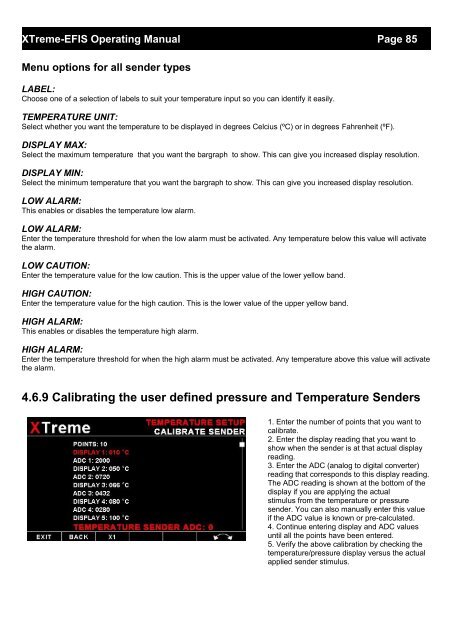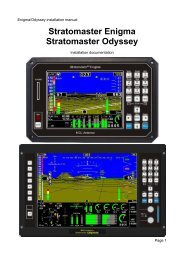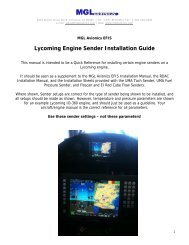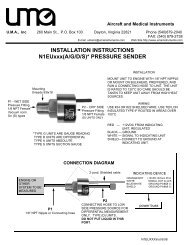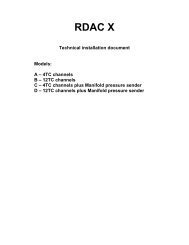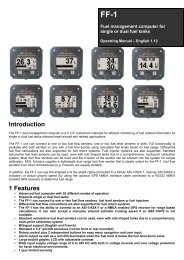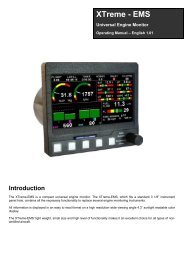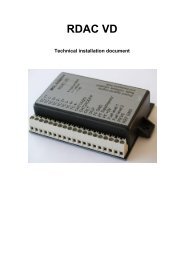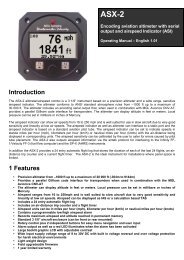XTreme EFIS - STRATOMASTER Instrumentation MGL Avionics
XTreme EFIS - STRATOMASTER Instrumentation MGL Avionics
XTreme EFIS - STRATOMASTER Instrumentation MGL Avionics
- No tags were found...
Create successful ePaper yourself
Turn your PDF publications into a flip-book with our unique Google optimized e-Paper software.
<strong>XTreme</strong>-<strong>EFIS</strong> Operating Manual Page 85Menu options for all sender typesLABEL:Choose one of a selection of labels to suit your temperature input so you can identify it easily.TEMPERATURE UNIT:Select whether you want the temperature to be displayed in degrees Celcius (ºC) or in degrees Fahrenheit (ºF).DISPLAY MAX:Select the maximum temperature that you want the bargraph to show. This can give you increased display resolution.DISPLAY MIN:Select the minimum temperature that you want the bargraph to show. This can give you increased display resolution.LOW ALARM:This enables or disables the temperature low alarm.LOW ALARM:Enter the temperature threshold for when the low alarm must be activated. Any temperature below this value will activatethe alarm.LOW CAUTION:Enter the temperature value for the low caution. This is the upper value of the lower yellow band.HIGH CAUTION:Enter the temperature value for the high caution. This is the lower value of the upper yellow band.HIGH ALARM:This enables or disables the temperature high alarm.HIGH ALARM:Enter the temperature threshold for when the high alarm must be activated. Any temperature above this value will activatethe alarm.4.6.9 Calibrating the user defined pressure and Temperature Senders1. Enter the number of points that you want tocalibrate.2. Enter the display reading that you want toshow when the sender is at that actual displayreading.3. Enter the ADC (analog to digital converter)reading that corresponds to this display reading.The ADC reading is shown at the bottom of thedisplay if you are applying the actualstimulus from the temperature or pressuresender. You can also manually enter this valueif the ADC value is known or pre-calculated.4. Continue entering display and ADC valuesuntil all the points have been entered.5. Verify the above calibration by checking thetemperature/pressure display versus the actualapplied sender stimulus.


